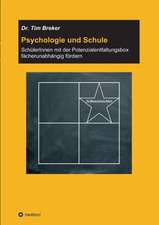Disease Mapping: From Foundations to Multidimensional Modeling
Autor Miguel A. Martinez-Beneito, Paloma Botella-Rocamoraen Limba Engleză Paperback – 31 mar 2021
Disease Mapping: From Foundations to Multidimensional Modeling guides the reader from the basics of disease mapping to the most advanced topics in this field. A multidimensional framework is offered that makes possible the joint modeling of several risks patterns corresponding to combinations of several factors, including age group, time period, disease, etc. Although theory will be covered, the applied component will be equally as important with lots of practical examples offered.
Features:
- Discusses the very latest developments on multivariate and multidimensional mapping.
- Gives a single state-of-the-art framework that unifies most of the previously proposed disease mapping approaches.
- Balances epidemiological and statistical points-of-view.
- Requires no previous knowledge of disease mapping.
- Includes practical sessions at the end of each chapter with WinBUGs/INLA and real world datasets.
- Supplies R code for the examples in the book so that they can be reproduced by the reader.
About the Authors:
Miguel A. Martinez Beneito has spent his whole career working as a statistician for public health services, first at the epidemiology unit of the Valencia (Spain) regional health administration and later as a researcher at the public health division of FISABIO, a regional bio-sanitary research center. He has been also the Bayesian Hierarchical Models professor for several seasons at the University of Valencia Biostatics Master.
Paloma Botella Rocamora has spent most of her professional career in academia although she now works as a statistician for the epidemiology unit of the Valencia regional health administration. Most of her research has been devoted to developing and applying disease mapping models to real data, although her work as a statistician in an epidemiology unit makes her develop and apply statistical methods to health data, in general.
| Toate formatele și edițiile | Preț | Express |
|---|---|---|
| Paperback (1) | 402.12 lei 3-5 săpt. | +37.71 lei 5-11 zile |
| CRC Press – 31 mar 2021 | 402.12 lei 3-5 săpt. | +37.71 lei 5-11 zile |
| Hardback (1) | 604.98 lei 6-8 săpt. | |
| CRC Press – 17 iul 2019 | 604.98 lei 6-8 săpt. |
Preț: 402.12 lei
Preț vechi: 437.08 lei
-8% Nou
Puncte Express: 603
Preț estimativ în valută:
76.96€ • 80.05$ • 63.53£
76.96€ • 80.05$ • 63.53£
Carte disponibilă
Livrare economică 24 martie-07 aprilie
Livrare express 08-14 martie pentru 47.70 lei
Preluare comenzi: 021 569.72.76
Specificații
ISBN-13: 9780367779528
ISBN-10: 0367779528
Pagini: 446
Dimensiuni: 156 x 234 x 24 mm
Greutate: 0.93 kg
Ediția:1
Editura: CRC Press
Colecția Chapman and Hall/CRC
ISBN-10: 0367779528
Pagini: 446
Dimensiuni: 156 x 234 x 24 mm
Greutate: 0.93 kg
Ediția:1
Editura: CRC Press
Colecția Chapman and Hall/CRC
Cuprins
I. DISEASE MAPPING: THE FOUNDATIONS
1. Introduction
Some considerations on this book
Notation
2. Some basic ideas of Bayesian inference
Bayesian inference
Some useful probability distributions
Bayesian Hierarchical Models
Markov chain Monte Carlo Computing
Convergence assessment of MCMC simulations
3. Some essential tools for the practice of Bayesian disease mapping
WinBUGS
The BUGS language
Running models in WinBUGS
Calling WinBUGS from R
INLA
INLA basics
Plotting maps in R
Some interesting resources in R for disease mapping practitioners
4. Disease mapping from foundations
Why disease mapping?
Risk measures in epidemiology
Risk measures as statistical estimators
Disease mapping, the statistical problem
Non-spatial smoothing
Spatial smoothing
Spatial distributions
The Intrinsic CAR distribution
Some proper CAR distributions
Spatial hierarchical models
Prior choices in disease mapping models
Some computational issues on the BYM model
Some illustrative results on real data
II. DISEASE MAPPING: TOWARDS MULTIDIMENSIONAL MODELING
5. Ecological Regression
Ecological regression: a motivation
Ecological regression in practice
Some issues to take care of in ecological regression studies
Confounding
Fallacies in ecological regression
The Texas sharpshooter fallacy
The ecological fallacy
Some particular applications of ecological regression
Spatially varying coefficients models
Point source modelling
6. Alternative spatial structures
CAR-based spatial structures
Geostatistical modeling
Moving-average based spatial dependence
Splines based modeling
Modelling of specific features in disease mapping studies
Modeling partitions and discontinuities
Models for fitting zero excesses
7. Spatio-temporal disease mapping
Some general issues in spatio-temporal modelling
Parametric temporal modelling
Splines-based modelling
Non-parametric temporal modelling
8. Multivariate modelling
Conditionally specified models
Multivariate models as sets of conditional multivariate Distributions
Multivariate models as sets of conditional univariate distributions
Coregionalization models
Factor models, Smoothed ANOVA and other approaches
Factor models
Smoothed ANOVA
Other approaches
9. Multidimensional modelling
A brief introduction and review of multidimensional modeling
A formal framework for multidimensional modeling
Some tools and notation
Separable modeling
Inseparable modeling
Annex 1
Bibliography
Index
1. Introduction
Some considerations on this book
Notation
2. Some basic ideas of Bayesian inference
Bayesian inference
Some useful probability distributions
Bayesian Hierarchical Models
Markov chain Monte Carlo Computing
Convergence assessment of MCMC simulations
3. Some essential tools for the practice of Bayesian disease mapping
WinBUGS
The BUGS language
Running models in WinBUGS
Calling WinBUGS from R
INLA
INLA basics
Plotting maps in R
Some interesting resources in R for disease mapping practitioners
4. Disease mapping from foundations
Why disease mapping?
Risk measures in epidemiology
Risk measures as statistical estimators
Disease mapping, the statistical problem
Non-spatial smoothing
Spatial smoothing
Spatial distributions
The Intrinsic CAR distribution
Some proper CAR distributions
Spatial hierarchical models
Prior choices in disease mapping models
Some computational issues on the BYM model
Some illustrative results on real data
II. DISEASE MAPPING: TOWARDS MULTIDIMENSIONAL MODELING
5. Ecological Regression
Ecological regression: a motivation
Ecological regression in practice
Some issues to take care of in ecological regression studies
Confounding
Fallacies in ecological regression
The Texas sharpshooter fallacy
The ecological fallacy
Some particular applications of ecological regression
Spatially varying coefficients models
Point source modelling
6. Alternative spatial structures
CAR-based spatial structures
Geostatistical modeling
Moving-average based spatial dependence
Splines based modeling
Modelling of specific features in disease mapping studies
Modeling partitions and discontinuities
Models for fitting zero excesses
7. Spatio-temporal disease mapping
Some general issues in spatio-temporal modelling
Parametric temporal modelling
Splines-based modelling
Non-parametric temporal modelling
8. Multivariate modelling
Conditionally specified models
Multivariate models as sets of conditional multivariate Distributions
Multivariate models as sets of conditional univariate distributions
Coregionalization models
Factor models, Smoothed ANOVA and other approaches
Factor models
Smoothed ANOVA
Other approaches
9. Multidimensional modelling
A brief introduction and review of multidimensional modeling
A formal framework for multidimensional modeling
Some tools and notation
Separable modeling
Inseparable modeling
Annex 1
Bibliography
Index
Notă biografică
Although Miguel A. Martinez-Beneito’s background is mostly based in mathematics/statistics his scientific career has been completely linked to Public Health. His first professional job was as statistician in the epidemiology unit of the Valencian regional health authority and all his research from then has been focused on the development of statistical methods for epidemiological studies. His main line of research is disease mapping and its extension to complex settings (multivariate spatial models, spatio-temporal models, spatial survival models, …) where he has published most of his research papers with either methodological/statistical or applied/epidemiological content. Regardless his peer-reviewed scientific publication Dr. Martinez-Beneito has been involved in several projects entailing the intensive application of disease mapping methods to the study of mortality in different contexts and regions. As a result he is author of 3 spatial atlas of mortality (2 of them corresponding to the Valencian region and another one to big Spanish cities) and 1 spatio-temporal atlas (http://www.geeitema.org/AtlasET/index.jsp?idioma=I). This extensive experience in geographical mortality studies makes Dr. Martinez-Beneito particularly suited to undertake this project.
Paloma Botella-Rocamora’s background is based in mathematics/statistics, but her scientific career is mainly linked to statistics within Public Health. Her first scientific job was as part time research internship at the Epidemiology Unit of the Valencian regional health authority working in a project studying rare diseases, where she developed different spatial atlases of morbidity for rare diseases. During those years she also participated in the development of a spatial mortality atlas in the Valencian region, and a spatio-temporal mortality atlas in this same region (http://www.geeitema.org/AtlasET/index.jsp?idioma=I). She has also been the first author of the Spanish spatial atlas of rare diseases. She shared those jobs with her classes as part time associate professor at the University of Valencia and CEU-Cardenal Herrera University, where she already continues working as full time professor. Her teaching scope has always been linked to biostatistics in Health Sciences.
Following the topic of his doctoral thesis, Paloma Botella Rocamora’s main line of research is disease mapping where she has published most of her research papers with either methodological/statistical or applied content. She has started to work in her recent scientific stay at the University of Minnesota (2013 summer) in the extension of disease mapping models to complex settings (multivariate spatial models, spatio-temporal models, …). This extensive experience in geographical mortality studies makes Dr. Botella-Rocamora particularly suited to undertake this project
Paloma Botella-Rocamora’s background is based in mathematics/statistics, but her scientific career is mainly linked to statistics within Public Health. Her first scientific job was as part time research internship at the Epidemiology Unit of the Valencian regional health authority working in a project studying rare diseases, where she developed different spatial atlases of morbidity for rare diseases. During those years she also participated in the development of a spatial mortality atlas in the Valencian region, and a spatio-temporal mortality atlas in this same region (http://www.geeitema.org/AtlasET/index.jsp?idioma=I). She has also been the first author of the Spanish spatial atlas of rare diseases. She shared those jobs with her classes as part time associate professor at the University of Valencia and CEU-Cardenal Herrera University, where she already continues working as full time professor. Her teaching scope has always been linked to biostatistics in Health Sciences.
Following the topic of his doctoral thesis, Paloma Botella Rocamora’s main line of research is disease mapping where she has published most of her research papers with either methodological/statistical or applied content. She has started to work in her recent scientific stay at the University of Minnesota (2013 summer) in the extension of disease mapping models to complex settings (multivariate spatial models, spatio-temporal models, …). This extensive experience in geographical mortality studies makes Dr. Botella-Rocamora particularly suited to undertake this project
Recenzii
"Disease mapping, i.e. the study of the geographical distribution of diseases, is an important emerging tool not only for better understanding public health issues but also for deriving important clues for public health policy planners. This book is an effort by statisticians working as public health practitioners, whose careers have evolved surrounded by geographically referenced health data, to address issues related to this tool appropriately...As a great novelty of the book, the online material may enable readers to have direct access to most of the statistical/computing details that there is not enough room to fully explain within the book... In my opinion, researchers working in the area of population and public health in particular may find this book as a useful source to ensure optimal use of disease mapping. Further, since this book includes a fair number of examples, teachers of graduate-level courses on this topic may also find this book useful."
- Sada Nand Dwivedi, ISCB News, July 2020
- Sada Nand Dwivedi, ISCB News, July 2020
Descriere
Guides the reader from the foundations of disease mapping to the most advanced topic in this field - multidimensional modeling. Multidimensional framework makes possible the joint modeling of various risks patterns corresponding to combinations of several factors, such as age group, time period, disease, or sex.














